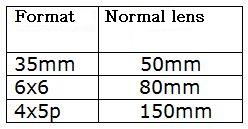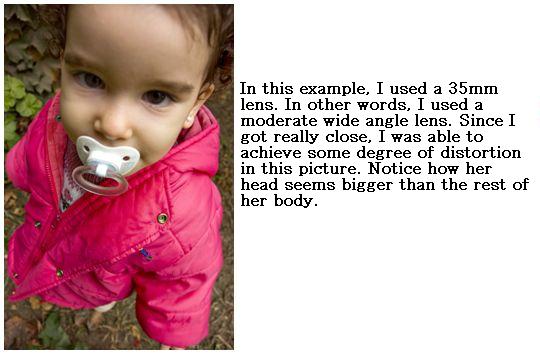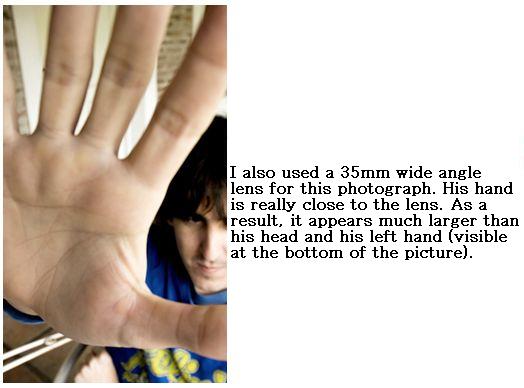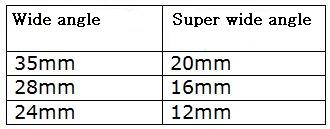Normal Lens
Why are they called normal? Because the lens registers almost the same we see at plain sight. It has the same viewing angle as the human eye. They are fixed lenses and they are cheaper and lighter in weight than other lenses.
A normal lens varies depending on the film format. The larger the film format, the longer the normal lens focal length is.

A normal lens has several advantages. The most important one is the fact that it is the brightest lens. This means they have an open diaphragm, with ranges around f/1.2, f/1.4, or f/1.8 (see more on diaphragms in later lessons). Being a bright lens allows us to shoot photographs with little available light or in faster shutter speeds.
Wide angle lens
In a wide angle, the camera registers a larger portion of a scene than usual. Objects in a picture appear smaller than how we see them in plain sight.
Generally, a wide angle lens creates some distortion in both image and distance. This distortion produces a "curved" effect. It will depend on:
A- The focal length of the lens: The less focal length there is, the more distortion it will cause. A 16mm lens will cause more distortion than a 28mm lens.
B- The lens quality: If you purchase a cheap lens or a low quality lens, they will create more distortion.
C- The distance of the object: There will be more distortion is you get closer to the subject you are photographing.
D- The angle towards the object: The more extreme angles you use to shot a picture, the more distortion it will cause.

Some advantages in wide angle lenses are:
- It helps take a picture in a small space in which a normal lens wouldn't be able to capture the entire scene. Imagine we are indoors and we want to take a picture with a lot of people in it; a normal lens might not be able to capture all of the people we are trying to photograph, but a wide angle lens wouldn't have any problem at all.
- It helps when we are shooting ample (wide) sceneries.
- It has a greater Depth of Field (see lesson 19). This means objects near or far from the camera will be in reasonable focus.
Sometimes, there will be an apparent perspective distortion: an object which is closer to the lens will appear larger than an object of the same size found farther from the camera. Many photographers use this distortion to achieve images with a greater visual impact.

Ex. 35mm


